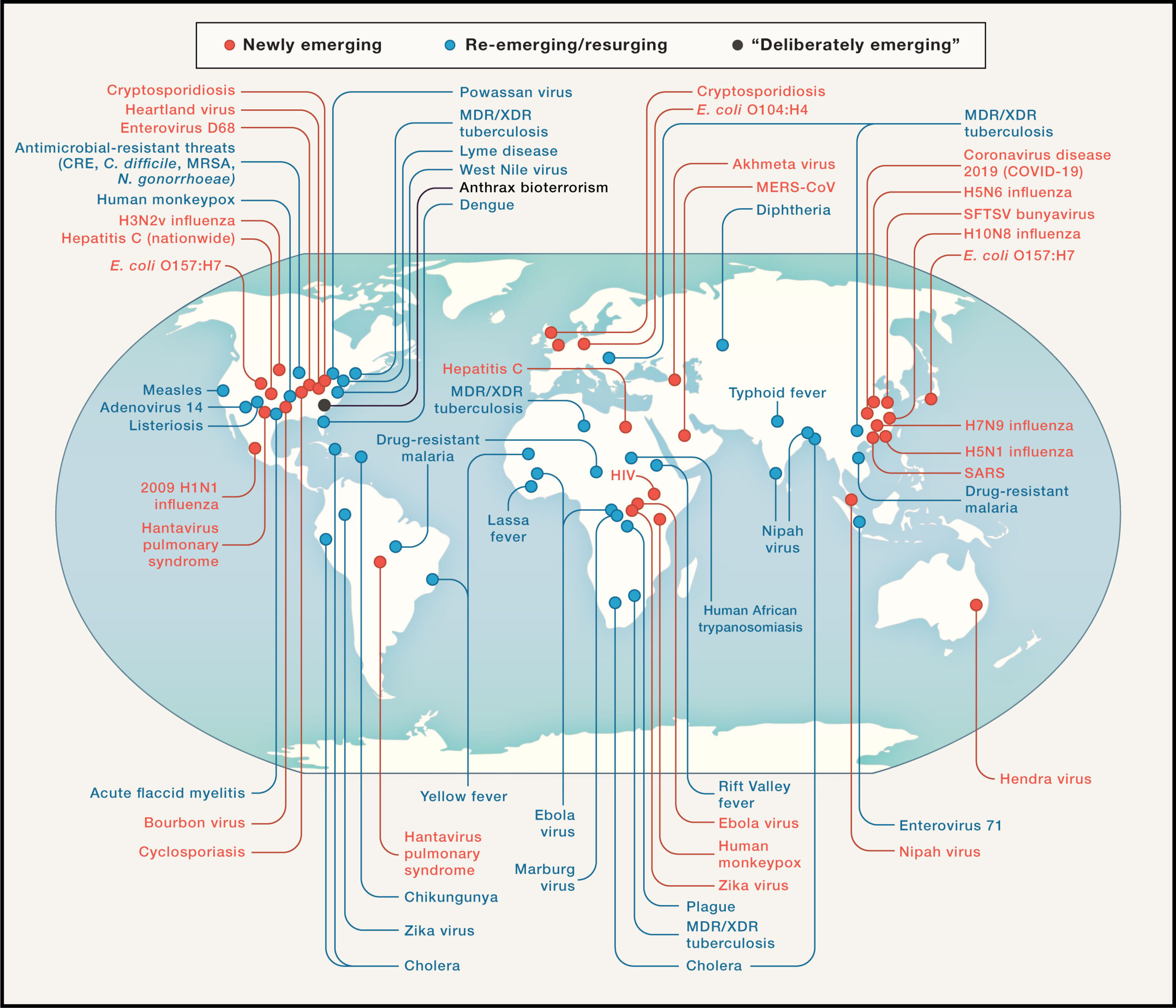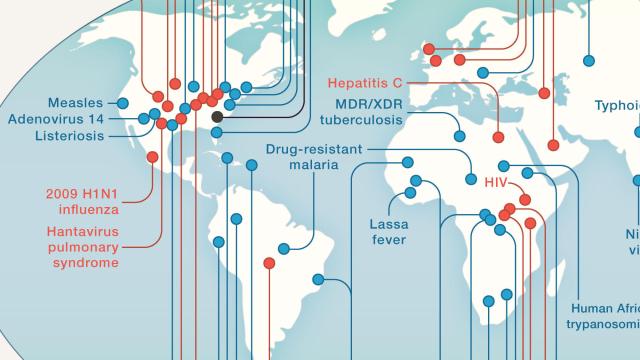Here’s the most depressing map you’re likely to see this week, courtesy of Anthony Fauci, head of the U.S. National Institute of Allergy and Infectious Diseases. The map, packaged in a recent paper co-written by Fauci, showcases the many other emerging diseases besides covid-19 that pose a threat to our health.
The paper, released over the weekend as a preprint in the journal Cell (meaning it may be revised before its final publication), is intended to lay out the environmental and human factors that led to covid-19 erupting on the world stage in late 2019. Fauci’s co-author is David Morens, senior scientific advisor at Office of the Director at NIAID. It’s an educational read, delving into how newly emerging diseases like covid-19 and familiar enemies like influenza can become so dangerous to humankind.

Viruses like the flu, for instance, quickly mutate into new strains that can easily swap genes with other flu viruses and pick up just the right assortment of genetic tricks that make them more lethal than the seasonal flu and help them spread widely from person to person. Coronaviruses aren’t quite so erratic, but their ability to infect a wide variety of host species makes them more likely to spill over into people — and that’s the leading theory behind how covid-19 entered the picture.
In fact, it’s more than possible, Fauci and Morens note, that the common cold coronaviruses we have today once caused major and deadly epidemics in the past. Though that could provide some comfort, seeing as these viruses are now relatively harmless, not all dangerous viruses become more tame over time, and those that do often take a long time to mellow out.
That brings us to the aforementioned map, an exhaustive but by no means complete illustration of the emerging and reemerging diseases that have recently caused us trouble or are still plaguing us (the danger of weaponised anthrax is highlighted as a “deliberately emerging” disease). Many of these aren’t particularly likely to become a pandemic, at least at the moment. Ebola, for instance, is highly fatal but remains relatively hard to transmit between people. Bacterial diseases like gonorrhea are worrisome because they’re becoming resistant to antibiotics, but they’re not especially lethal.
Far from being a vanishingly rare event, though, humankind has experienced a pandemic on average every 20 years in the last hundred years, with the last, the H1N1 flu, showing up 10 years ago.
None of this is to say that we’re powerless against the coming germ tide — there’s much we can do to prepare, and in fact, many people predicted something like covid-19 happening as recently as last October. But without learning from our mistakes this time around, there’s no telling just how bad the next pandemic will be.
“Science will surely bring us many life-saving drugs, vaccines, and diagnostics; however, there is no reason to think that these alone can overcome the threat of ever more frequent and deadly emergencies of infectious diseases,” Fauci and Morens wrote. “Covid-19 is among the most vivid wake-up calls in over a century. It should force us to begin to think in earnest and collectively about living in more thoughtful and creative harmony with nature, even as we plan for nature’s inevitable, and always unexpected, surprises.”
